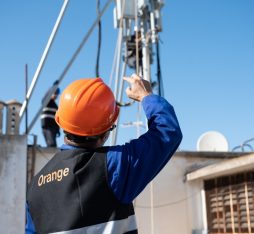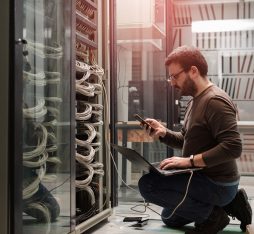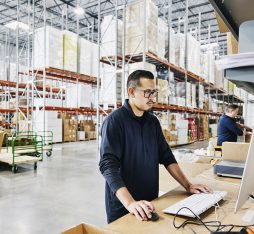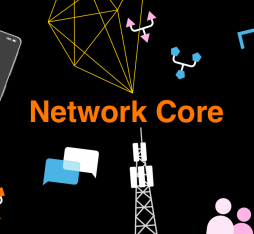In modern pharmaceutical plants, robots are at the heart of production. They operate in sterile areas with a controlled atmosphere, where the slightest microbial contamination poses a critical risk to product quality. So what happens if these machines encounter a technical problem or require maintenance? Until now, this has required human intervention in the clean room: a long and complex process requiring an often damaging production stoppage. At the Orange Open Tech days, a team from Orange Belgium is demonstrating how to make this simpler. The case study presented is the digital twin, coupled with Standalone 5G, of a robot handling samples.
The network from the operator’s headset to the robot needs high bandwidth to handle a considerable amount of data and low latency for perfect synchronization
A Perfectly Synchronized Digital Twin
Imagine you’re in the control room of a Pharma 4.0 plant. Wearing a HoloLens 2 augmented-reality headset from Microsoft, an operator sees the virtual 3D double of the robot in real time. Sensors on the real robot collect real-time data on things like temperature, belt tension, oil level and error messages, allowing the operator to perform a complete diagnosis of the operating status of the machine. They can also view the operating history, interact with the robot and launch an update or predictive maintenance application, without having to go to the clean room. This saves considerable time, minimizes production downtime and eliminates the risk of external contamination.
Bandwidth, Latency and Quality Requirements
The demonstration gives glimpses of several use cases for this technology. For example, digital twins of entire cities could help manage transport flows or improve the energy performance of buildings. Digital twins of tests could determine an optimal production procedure and perform technical approvals, system analyses and acceptance testing before rolling out a new production line.
“These use cases pose significant technical and security challenges, which we have taken into account when developing this pilot,” explains Olivier Nerinckx, Product Manager Device Industry 4.0 at Orange Belgium. “The network from the operator’s headset to the robot needs high bandwidth to handle a considerable amount of data, because the robot’s 3D double is stored in the cloud and then transmitted to the headset. Data from the robot’s real-time sensors are also transmitted continuously and in real time to the operator. Similarly, we must have low latency between the robot and the headset so that the double is perfectly synchronized with the real robot and we can interact in real time. Finally, it goes without saying that network availability is essential!”
Standalone 5G
The creation of an SA 5G network enabled Orange and its partners—Mr. Watts (digital twin developer), Stäubli (robot arm designer) and Cilyx (production environment creator and integrator)—to execute the demo project. This project natively integrates data protection, using a reserved portion of this private network but also hosting in a private cloud. “The project was put together in test and learn mode, using the Microsoft Azure IoT Hub platform.”
An Inspiration for Businesses in Transition
By opting for this type of approach, companies in the midst of digital transformation can envisage all kinds of use cases and specific deployments. As an example, if they want even more cybersecurity, edge cloud computing enables them to develop their digital twin while keeping their critical and confidential data as close as possible to their production line. Industry 4.0 will benefit from other applications of the 5G/digital twin pair that Orange Belgium is demonstrating.














